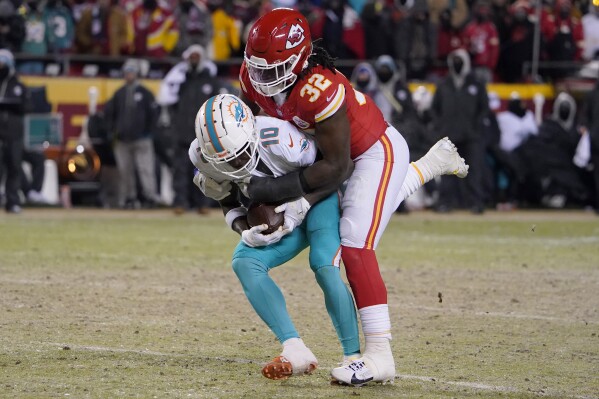Report: US streamed record 40bn minutes on Jan 13
February 21, 2024

Winter weather, coupled with the excitement of the NFL playoffs, helped boost total TV viewership by 3.7 per cent acros the US in January, according to Nielsen’s The Gauge report.
While historically characteristic for the month, the uptick was perhaps more noteworthy because it was 1.4 per cent above its level in 2023 – a reporting period that was longer and wasn’t in short supply of new programming. In fact, January 2024 included three of the top 10 days with the most TV viewing since Nielsen began producing The Gauge in May 2021.
While NFL is always a key driver of TV viewing, colder-than-usual weather played a key role in TV viewing in markets that aren’t as seasonally cool, including Tulsa and Portland, where TV viewing increased 10 per cent and 7 per cent, respectively. And in Tampa, the cooler temps and the Tampa Bay Buccaneers’ playoff run combined to bolster TV viewing by 14 per cent on a year-over-year basis.
The power of the NFL playoffs also rippled into the streaming landscape, as the Wildcard game between the Miami Dolphins and Kansas City Chiefs on Peacock generated almost 3.9 billion viewing minutes (including local viewing in Kansas City and Miami), and helped January 13th 2024 take the crown for having the largest daily volume of streaming on record. In total, January 2024 included nine of the top 10 days with the highest streaming volumes ever recorded by Nielsen, with New Year’s Eve 2023 (which was recorded in the December interval) at No. 9.
In addition to colder weather, January welcomed the beginnings of new, scheduled drama programming, which accounted for a 20 per cent increase in viewing on broadcast networks. NBC’s Chicago franchise (Chicago Fire, Chicago Med, Chicago P.D.) led the way, representing some of the first ‘new’ scripted content of the broadcast TV season. Combined with a 36 per cent rise in sports viewing, broadcast was able to grow its share of TV by 0.7 share points to end the month at 24.2 per cent of TV. With the arrival of new programming still somewhat limited, however, broadcast viewing was down 20 per cent compared with a year ago.
Cable viewing was up 2.7 per cent in January, but the rise in total TV usage resulted in a 0.3 share point loss to land at 27.9 per cent of TV. Seasonality played a role here, as viewers transitioned away from holiday-themed movies, which led to a decrease of more than 19 per cent in feature film viewership. Comparatively, news viewing picked up, accounting for 19 per cent of overall cable usage, with the Iowa Town Hall on Fox News Channel becoming the only non-sports programme to land in the top 10 cable broadcasts (excluding sports commentary). And while sports programming was less prevalent on cable, American football games dominated the most-watched programmes, including the College Football Playoff game between Michigan and Alabama on New Year’s Day, which took the top spot with 26.1 million viewers.
Like broadcast, streaming also benefited from the return of new scripted programming, with Fool Me Once on Netflix topping the list of most-watched programmes with 6.5 billion minutes – the first time an original has topped the streaming charts since Queen Charlotte – A Bridgerton Story did so in May 2023. Bluey, on Disney+, and Reacher, on Prime Video, were close behind, with 5.5 billion minutes and 4.3 billion minutes, respectively. In total, streaming usage was up 4.1 per cent in January.
At the platform level, YouTube marked its twelfth consecutive month as the top streaming service. Peacock saw a 29 per cent spike in usage, driven by NFL playoff coverage, to account for a record 1.6 per cent share of TV. Netflix gained 0.2 share points to end the month at 7.9 per cent of TV, its highest since August 2023, and the 10 per cent increase in Roku Channel usage bumped its share back to 1.1 per cent of total TV.
February, in addition to including viewership for the Super Bowl, will mark the formal start of an abbreviated broadcast TV season, which could offset some of the viewing declines that typically follow the end of the NFL season, notes Nielsen. With spring not yet on the horizon, the continued arrival of new content across traditional and streaming channels will likely keep audiences engaged until warmer weather arrives.
